AI Trends
Artificial Intelligence (AI) has moved from science fiction to our daily lives with astonishing speed. From the smartphones in our pockets to the services that predict what we might watch next or help us navigate traffic, AI is already deeply integrated into how we live, work, and play. As we step into 2025, the field of Artificial Intelligence is poised to make even greater leaps forward, with far-reaching implications for nearly every sector.
AI Trends 2025 is not just a topic for tech enthusiasts or researchers—it’s a crucial subject for anyone who wants to stay ahead in a world increasingly driven by data and algorithms. Whether you are a business leader, a student, or simply a curious reader, understanding what’s coming can help you make informed decisions and embrace change with confidence.
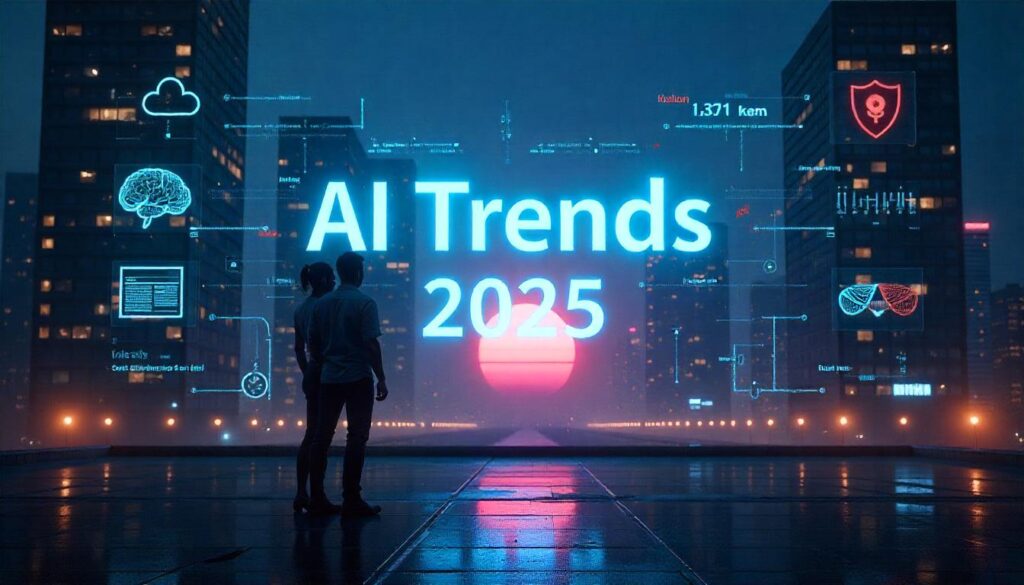
In this article, we explore the top AI trends that are shaping 2025 and the years beyond. These trends go beyond the hype and delve into the real-world impacts of AI—from revolutionizing healthcare to enhancing creative processes, from automating mundane tasks to defending against cyber threats. As we uncover these developments, one thing becomes clear: Artificial Intelligence is not just a tool; it is becoming a collaborative partner in our lives.
Join us as we journey through the cutting-edge transformations that are defining the next era of AI. Let’s dive into AI Trends 2025 and discover how they are poised to change our world in ways both exciting and profound.
AI-Powered Automation in Everyday Life
The rise of AI-powered automation in everyday life is one of the most visible and transformative AI Trends of 2025. As the technology becomes more sophisticated and affordable, automation is no longer limited to factories and corporate settings—it’s now entering our homes, our schools, and even our personal routines.
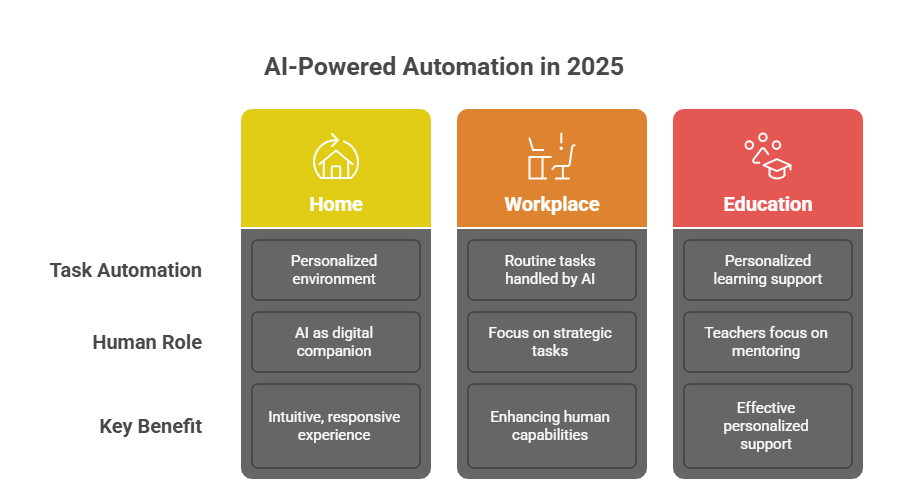
Imagine waking up to a smart home system that has already adjusted the temperature, prepared your morning coffee, and reminded you of your day’s schedule. Voice-activated personal assistants like Alexa and Google Assistant are evolving from basic task managers to proactive digital companions that anticipate your needs. These AI systems learn from your habits and preferences, creating an environment tailored specifically for you.
In the workplace, AI is revolutionizing administrative and operational tasks. Routine responsibilities such as scheduling meetings, managing emails, and data entry are increasingly handled by AI-driven virtual assistants and bots. This frees up human workers to focus on more strategic, creative, and emotionally intelligent tasks—areas where human touch remains irreplaceable.
Education is also benefiting from AI automation. Intelligent tutoring systems adapt to individual learning styles, providing personalized feedback and support that helps students learn more effectively. Teachers can use AI tools to automate grading and analyze student performance, allowing them to focus more on mentoring and interaction.
However, with great innovation comes the challenge of adaptation. Many people feel uneasy about machines taking over tasks once handled by humans. The key lies in balance—leveraging AI to enhance human capabilities rather than replace them. As we embrace AI-powered automation, it’s crucial to ensure that the human touch is not lost in the process.
Ultimately, this trend signifies a shift in how we interact with technology. It’s not just about efficiency; it’s about creating a more intuitive, responsive, and human-centric experience. In 2025, automation is not just a convenience—it’s a partner in our daily lives, quietly working in the background to make our routines smoother and more meaningful.
Generative AI Evolution
Generative AI is one of the most revolutionary forces in Artificial Intelligence today, and by 2025, its evolution is reaching unprecedented levels. From creating lifelike images to composing music, generating code, and crafting compelling written content, generative AI is no longer a novelty; it’s a game-changer.
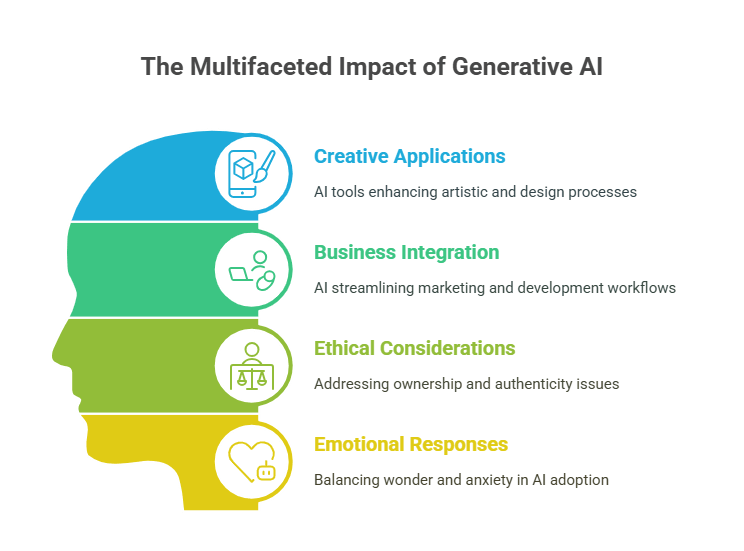
Take a moment to consider the profound shift in creativity. Artists, writers, musicians, and filmmakers are using AI tools like ChatGPT, Midjourney, and Sora to brainstorm ideas, draft content, or even co-create entire projects. Far from replacing human creativity, these tools amplify it. A writer facing writer’s block can now collaborate with an AI to generate new plot twists. A designer can quickly visualize multiple prototypes based on minimal input. It’s as if every creative mind now has a tireless assistant ready to help bring ideas to life.
Businesses are also integrating generative AI into their workflows. Marketing teams use AI to personalize advertising campaigns, generate social media content, and produce multilingual material at scale. Coders use tools like GitHub Copilot to speed up development cycles and reduce routine errors. This allows for faster innovation and greater agility in responding to market demands.
However, the rise of generative AI also raises ethical and practical questions. Who owns the content created by an AI? How can we distinguish between human-made and machine-generated work? Misinformation and deepfakes add another layer of complexity, emphasizing the need for transparency and regulation.
Emotionally, generative AI evokes a mix of wonder and anxiety. The ability to create at the speed of thought feels empowering, but also challenges our traditional notions of authorship and authenticity. As we embrace these tools, we must also cultivate media literacy and ethical awareness.
By 2025 and beyond, the evolution of generative AI represents a powerful trend in Artificial Intelligence—one that invites us to reimagine what it means to create, collaborate, and communicate in a world where human imagination meets machine capability.
AI in Healthcare and Biotech
Among the most life-altering applications of Artificial Intelligence in 2025 is its transformative role in healthcare and biotechnology. Imagine a world where early diagnosis of cancer, personalized medicine, and robot-assisted surgeries are not just futuristic fantasies but everyday realities. That future is here, and AI is driving it.
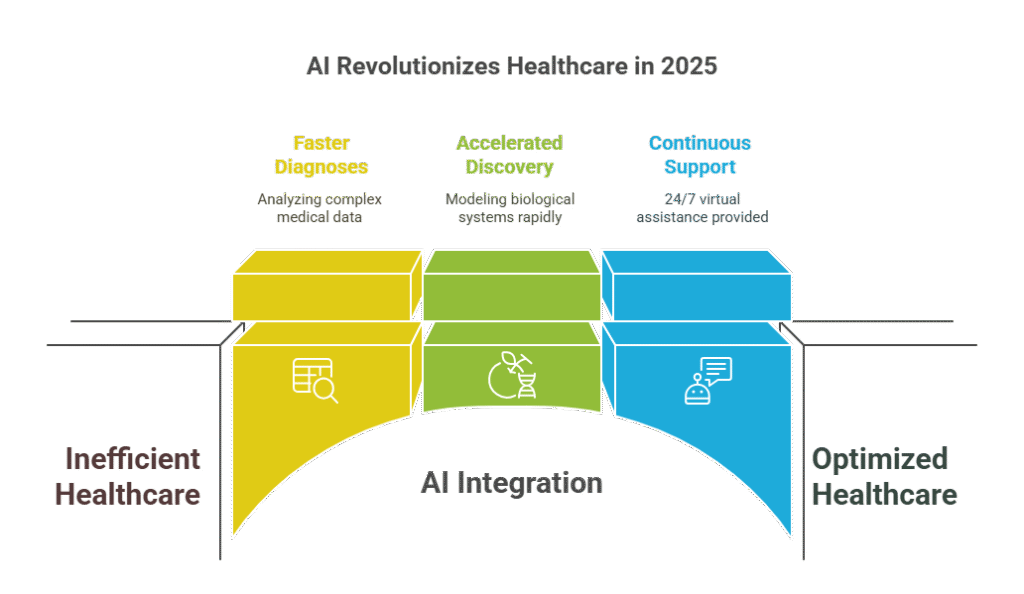
Healthcare has always been an emotionally charged field—it deals with life, death, and the well-being of those we love. AI is helping doctors make faster, more accurate diagnoses by analyzing complex medical data far more efficiently than any human could. Tools like IBM Watson and Google DeepMind’s health division have evolved to assist radiologists in spotting early signs of diseases like cancer or neurological conditions. These systems don’t replace doctors; instead, they serve as highly intelligent partners, offering second opinions and catching things that might otherwise go unnoticed.
In the realm of drug discovery, AI accelerates what used to take years into months. By modeling biological systems and simulating how molecules interact, AI helps researchers identify promising compounds faster, enabling quicker development of life-saving drugs. This was evident during the COVID-19 pandemic and continues to evolve with new therapies for rare and chronic diseases.
AI is also transforming patient care. Chatbots and virtual nurses offer 24/7 support, answering medical questions and reminding patients to take their medications. Wearable devices powered by AI track vital signs in real time, alerting both patients and doctors to potential issues before they become emergencies. For patients, this offers peace of mind; for families, it’s a layer of reassurance that care is constant.
Yet, these advancements come with challenges. Data privacy, algorithmic bias, and the need for human oversight remain pressing concerns. It’s vital that we build AI systems in healthcare that are transparent, inclusive, and designed with empathy.
As we move further into 2025 and beyond, the fusion of Artificial Intelligence and healthcare represents not just a technological leap, but a human one. It’s about saving lives, easing suffering, and bringing a level of care and precision that was once unimaginable into the hands of caregivers and patients alike.
Ethical AI and Responsible Development
As AI becomes more ingrained in our daily lives, the ethical implications of its use take center stage in the AI Trends 2025 conversation. The growing power of AI demands not only innovation but responsibility—because the stakes are deeply human.
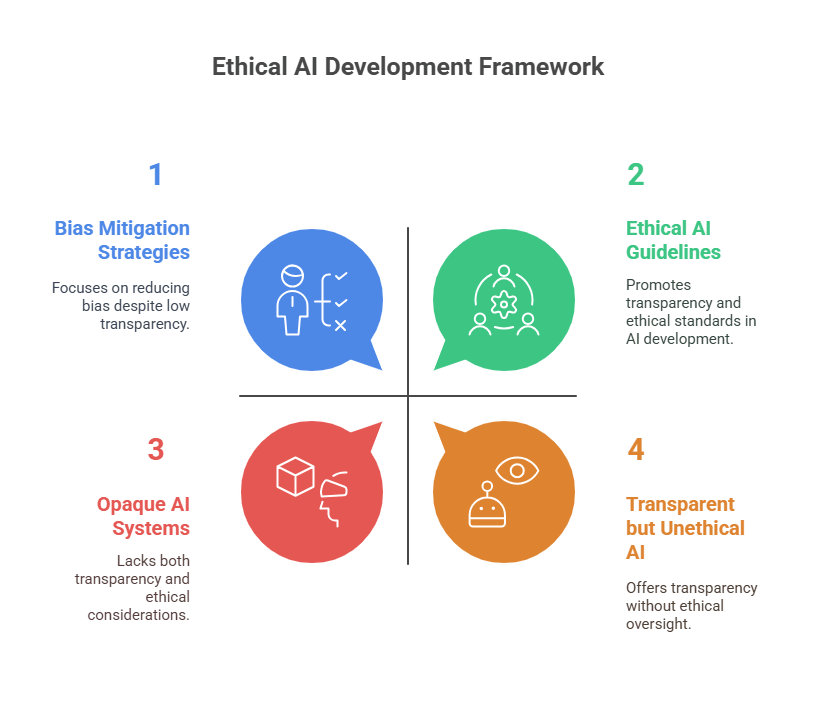
We’re now at a point where decisions made by algorithms can influence everything from job applications to parole decisions. In these critical areas, the presence of bias or lack of transparency can lead to real harm. For instance, facial recognition systems have faced criticism for inaccuracies, especially with people of color, while predictive policing algorithms risk perpetuating systemic inequalities. These issues force us to confront a difficult truth: AI is only as unbiased as the data and designers behind it.
That’s why 2025 is witnessing a stronger push toward ethical AI development. Researchers, companies, and governments are coming together to create guidelines and laws that promote transparency, accountability, and fairness. This includes requiring AI systems to be explainable, so users can understand how decisions are made, and auditing AI models to identify and fix discriminatory patterns.
On a more emotional level, there’s a growing movement to humanize AI. Developers are being asked to consider not just whether an AI system works—but whether it’s doing good. Does it respect privacy? Does it reinforce human dignity? These aren’t just technical questions—they’re moral ones. And as users become more aware, they’re demanding technology that aligns with their values.
AI’s power is immense, but without responsibility, it becomes dangerous. Ethical AI is not a feature—it’s a necessity. In 2025 and beyond, responsible development will be the foundation of trust between humans and machines. Only by putting people first can we ensure that AI truly serves humanity, now and in the future.
AI and Cybersecurity
In 2025, as the digital world becomes more connected, Artificial Intelligence is taking on a pivotal role in the ongoing battle for cybersecurity. The threats are more sophisticated than ever—ransomware, phishing, and zero-day attacks now often use AI themselves. This is a digital arms race, and AI is fighting fire with fire.
Advanced AI algorithms can analyze millions of data points in real-time to detect threats before they strike. They identify unusual behaviors, flag anomalies, and even predict potential breaches. Companies are deploying AI-driven security systems that continuously learn from new threats, adapting in real time to protect sensitive data and critical infrastructure. This kind of proactive defense was once a dream—now it’s becoming the norm.
But it’s not just about corporations. On a personal level, AI is protecting our identities and digital lives. From smart home networks to online banking, AI watches over us quietly but diligently. It can detect suspicious login attempts, alert users to unusual account activity, and even shut down compromised access before damage is done.
Emotionally, the stakes in cybersecurity are deeply felt. The fear of being hacked or losing personal data is real and growing. For small businesses and families alike, knowing that AI is providing a protective shield offers reassurance and peace of mind.
However, this also leads to an important paradox: AI is both the hero and the villain. While AI safeguards our digital lives, it’s also being used by hackers to create more convincing scams and evade traditional defenses. This duality requires a new mindset—one where continuous vigilance, ethical oversight, and public awareness are key.
In the fight against cyber threats, AI is not a luxury—it’s a necessity. As we look ahead to 2025 and beyond, cybersecurity powered by intelligent systems will define how safe we feel in an increasingly digital world.
The Road Ahead: What to Expect Beyond 2025
As we stand at the threshold of 2025, one thing is clear: Artificial Intelligence is not a passing trend—it’s a transformative force that is redefining what it means to live, work, and connect in the modern world. But what lies beyond 2025? The road ahead is both thrilling and uncertain, filled with promise and complexity.
We can expect AI to become even more integrated into our personal lives. Future smart homes may not just respond to commands—they’ll intuit emotions, moods, and needs, creating environments that are more adaptive and empathetic. In education, AI may tailor entire curriculums in real-time, addressing each student’s learning style, pace, and interests. In healthcare, AI will likely take on predictive roles—spotting diseases before symptoms arise, guiding preventative care with unprecedented accuracy.
At the societal level, AI will reshape economies, redefine jobs, and demand new systems of governance. This includes not only technical training and workforce transformation but also thoughtful policy-making that keeps humans at the center of innovation. We’ll see new ethical frameworks emerging, designed to manage AI’s influence on issues ranging from climate change modeling to AI-generated art and culture.
Yet, this journey is also filled with important questions. How do we maintain privacy in a world of constant data? How do we preserve human creativity and individuality when machines can generate on our behalf? How do we ensure that AI is inclusive, fair, and transparent?
Emotionally, the future of AI evokes a mix of awe and responsibility. It’s a call to dream boldly but act wisely. Our collective choices—how we build, regulate, and relate to AI—will shape not just technological progress, but the values we carry forward as a society.
AI in Climate Action and Environmental Sustainability
In 2025, one of the most promising and inspiring applications of Artificial Intelligence is its role in combating climate change and promoting environmental sustainability. While global warming and environmental degradation are among humanity’s most pressing challenges, AI is emerging as a powerful ally in understanding and addressing these complex issues.
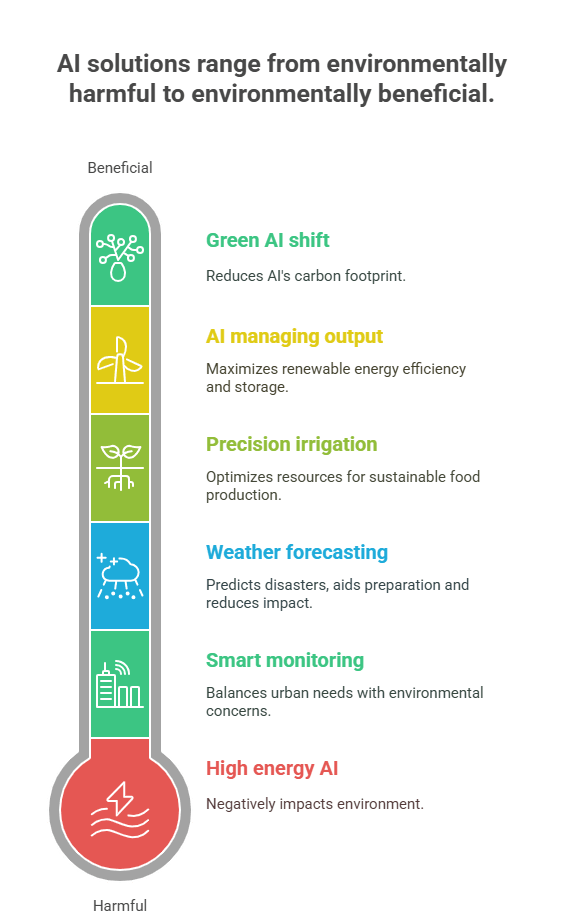
AI systems are now used to analyze vast amounts of environmental data—from satellite imagery to ocean temperature readings—to detect patterns and predict environmental changes. This allows scientists to model climate scenarios with greater accuracy and speed, helping policymakers make more informed decisions. For example, AI-driven models are improving predictions for extreme weather events like hurricanes, floods, and wildfires, giving communities more time to prepare and potentially save lives.
Sustainable agriculture is another area seeing significant AI-driven transformation. Smart farming technologies use AI to monitor soil health, optimize irrigation, and predict crop yields. Drones and sensors collect real-time data, while machine learning algorithms analyze it to make precision farming decisions that reduce waste, conserve water, and boost productivity. These innovations are critical as we strive to feed a growing population without further harming the planet.
AI is also enhancing renewable energy systems. Machine learning algorithms are optimizing the output and storage of solar panels and wind turbines, making green energy sources more efficient and reliable. By predicting energy demand and adjusting supply in real-time, AI is helping reduce reliance on fossil fuels and lower carbon emissions.
On a more local scale, cities are using AI to create smart infrastructure—managing traffic flow, reducing energy consumption, and monitoring pollution levels. These efforts not only improve quality of life but also contribute to broader sustainability goals.
Yet, AI’s environmental role is not without its own carbon footprint. Training large AI models requires significant computational power, often sourced from non-renewable energy. The AI community is now grappling with how to make these technologies greener, pushing for innovations in energy-efficient algorithms and sustainable computing.
Emotionally, the intersection of AI and environmentalism offers a rare blend of urgency and hope. It shows that technology—so often blamed for contributing to environmental harm—can also be part of the solution. As we move deeper into 2025, this trend underscores a vital message: AI’s greatest potential may not be in reshaping our digital world, but in preserving our natural one.
In conclusion, AI Trends 2025 marks not an endpoint, but a powerful beginning. It invites us to co-create a future where Artificial Intelligence enhances our humanity, deepens our understanding, and builds a world that reflects the very best of who we are.